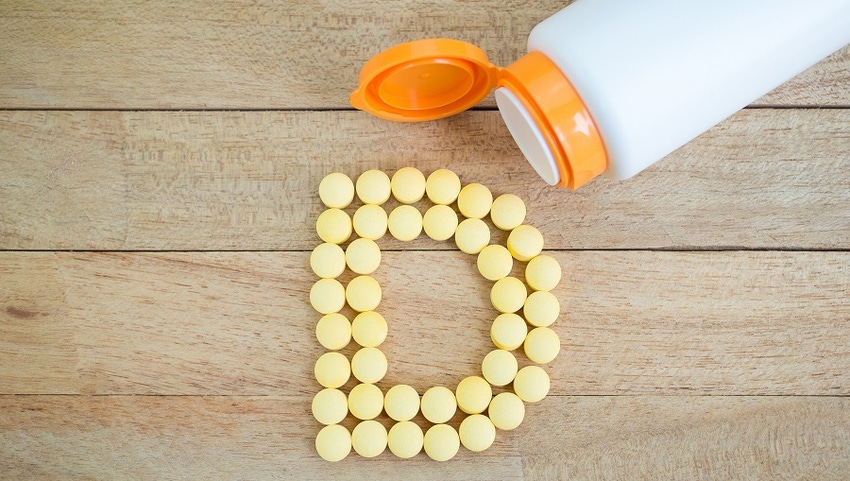- Personal Care
- Food and Beverage
- Industry Insights
- Business Management
- Regulatory
- Vitamins and Supplements
What can retailers say about how vitamin D works against COVID-19?
Rules around making health claims with supplements point to the proper way to discuss supplementation to help with disease states.

Since COVID-19 hit a year ago, 65 published studies have investigated vitamin D with the most debilitating disease to hit humanity in a century. The results point to real benefit from the sunshine vitamin—and suss out important details that show greater benefit depending on when and how much vitamin D people should take to make a clinical difference.
The vast majority of studies, totaling 12,563 patients, were on subjects taking vitamin D prophylactically. Here, an aggregate 42% improvement in the effect measured was seen.
In “late treatment” studies, patients received vitamin D after the disease has progressed. Here, patients saw 58% improvement.
But in early treatment studies—patients treated with vitamin D immediately or shortly thereafter, there was an incredible 90% improvement.
“Vitamin D is an effective treatment for COVID-19,” said Tim Avila, founder and president of Systems Bioscience, a consultancy applying systems biology to consumer goods and services companies. “What’s really fascinating is prophylaxis. Even so, there’s a 42% improvement. With all studies, it shows a 63% improvement. But early treatment studies are off the charts—90% improvement.”
In one small early treatment study of 28 patients in the treatment arm and seven control patients, researchers dispensed 4,000 IU vitamin D twice daily for 30 days. For those receiving vitamin D, the mean duration of symptoms was three days, compared to 10 days in the control group.
In another study, on French nursing-home residents, researchers compared those who received a bolus of 80,000 IU vitamin D either when COVID-19 struck or even the month before. Those who availed themselves of vitamin D had a survival rate of 82.5%, compared to only 44.4% in the control group. Not only did the vitamin D group have a better survival rate but they also experienced less severe cases of COVID-19.
Another early treatment study in France looked at those who regularly supplemented with vitamin D in the previous year as well as those who took vitamin D after COVID-19 diagnosis. The vitamin D group here also had less severe COVID-19 outcomes and better survival in the frail elderly.
Notably, a study that made all the headlines in the States was conducted in Brazil and published in the high-profile Journal of the American Medical Association (JAMA) in February 2021. It gave 120 patients with moderate to severe COVID-19 symptoms a whopping 200,000 IU of vitamin D and an equal group took placebo. The researchers declared no effect on vitamin D.
The headlines blasted that vitamin D was “not effective” in moderate to severe COVID-19 cases.
The primary end point was length of time in the hospital—both groups were in for seven days. But the vitamin D group hospital stay ranged from four to 10 days, while the placeo group ranged from five to 13 days. Yet the researchers declared them both the same.
Also, the patients were given their vitamin D dose after a relatively long time from symptom onset until the study start—more than 10 days!
This is in alignment with the overall trend of late-onset studies—a 58% improvement. Early treatment studies, remember, had a 90% improvement.
Furthermore, the study found that the proportion of people who required mechanical ventilation was 7.6% in the vitamin D group and 14.4% in the placebo group—that’s a 50% reduction!
For admission to intensive care, it was 16.0% for the vitamin D group and 21.2% for placebo.
And here’s perhaps the most telling statistic of all: There have been 18 treatment studies using vitamin D on people affected by COVID-19. This JAMA study is literally the only one that was not positive. So, of course, this is the one that JAMA published. Did the publication do it to influence uptake of the vitamin among the American population? Or to make headlines for itself? Even null studies are valuable for honing in on proper protocols—in this case, a single, massive dose of vitamin D taken pretty long after a person first felt the disease helped a little but not a lot.
Of course, the headlines all said don’t take vitamin D for COVID-19.
Was that the intent on JAMA publishing this vitamin D (relatively) null study—to push forward the narrative that vitamins don’t work?
The retailer communication strategy
For retailers talking with customers about things to do when the inevitable questions arise about COVID-19, the key is to keep it to the science and away from brands.
Put another way, are your words educational or promotional?
“Once a brand name is introduced, any disease or drug-like statement made becomes disease claims about the branded product they are now promoting,” said Michelle Zerbib, director of standards for New Hope Network, which advises brands exhibiting at Natural Products Expos or appearing in any other format. “The moment a customer asks what brands, the retailer should switch to structure/function statements about any given product.”
Retailers can’t exactly control the entire conversation with customers, but you need to be clear—these statements are about the science, and these statements are about this brand and product.
And you can provide useful information about dosage levels, timing of intake, anything else about vitamin D.
For instance, how vitamin D affects the metabolism of phosphate and magnesium. COVID-19 may induce a cytokine storm that drains ATP (the cell’s energy currency), whose regeneration requires phosphate and magnesium. And how those minerals are often deficient in older males, among those with diabetes and obesity.
Just be sure to provide something of a “paragraph break” before talking about specific brands so as to not blur the lines between educational science and brand advocacy as it relates to this or any other disease state.
“When we start talking about COVID-19, we have to be careful,” said Susan Hewlings, director of scientific affairs at ingredient supplier Nutrasource. “We know it’s a no-no to talk about disease. You can use structure/function claims that are adequately substantiated. We want to use terms like ‘supports the immune system.’ We want to avoid saying things like ‘protect from COVID-19 or reduce symptoms.”
That’s a brand talking.
Per the governing legislation around dietary supplements, vitamins, minerals, botanicals and the like cannot claim to “prevent, cure or treat” any disease. This boxed communication is mandated on every bottle of supplements.
Yet the research shows that people with high blood levels of vitamin D—around 38 ng/dl seems to be the cut-off mark—do not get the disease. So that sounds like prevention. Low vitamin D levels lead to worse COVID-19 outcomes. This much we can be confident of at this point.
In a study in Spain, researchers provided COVID-19 patients on the day of admission to the hospital with about 20,000 IU vitamin D, then 10,000 IU on days three and seven, and then weekly until discharge or admission to the intensive care unit. Of the 50 patients treated with vitamin D, only 2% required admission to the ICU while 50% did who did not take vitamin D. None of the vitamin D group died, while 16% of non-vitamin D takers did. The conclusion is that vitamin D can prevent worse outcomes.
Age and location matter
Two other points are important for retailers.
One is that geography matters. One study found that average mortality correlated to where patients sat on the map. That is, for every degree north from the equator there was an increase in COVID-19 deaths. Above 35 degrees was a pronounced increase in COVID-19 deaths—this is a line that runs roughly through the central coast of California and north of Las Vegas, and is basically the northern borders of Arizina, New Mexico, Texas, Oklahoma, Arkansas and the southern borders of Tennessee and North Carolina.
So if you’re a retailer in the north, recommend customers take vitamin D.
The other is that age matters.
In a German study, patients with vitamin D levels below 12 ng/ml had a 14.7-fold higher risk of dying and were six times more likely to have worse outcomes.
“To put this in perspective,” said James DiNicolantonio, Ph.D., author of three books and director of scientific affairs at ingredient supplier AIDP, “if you are over age 60, you are at a nine-fold higher risk of dying—but you cannot control your age, but you can control if you are vitamin D deficient, and this seems to be an even worse risk factor than being elderly.”
About the Author(s)
You May Also Like




